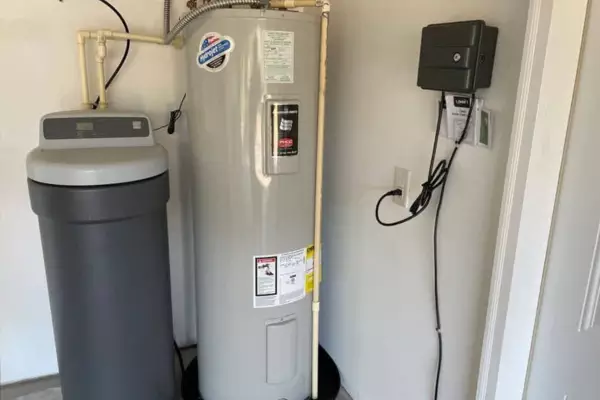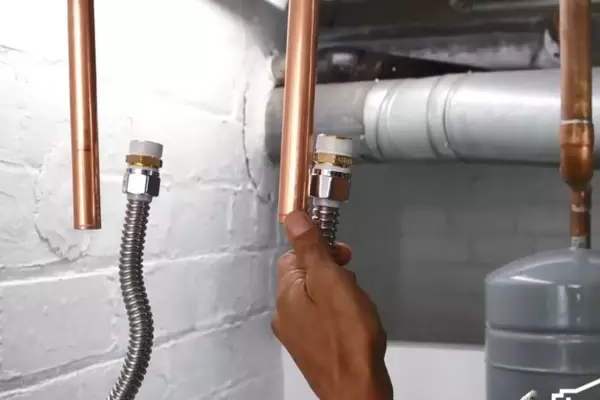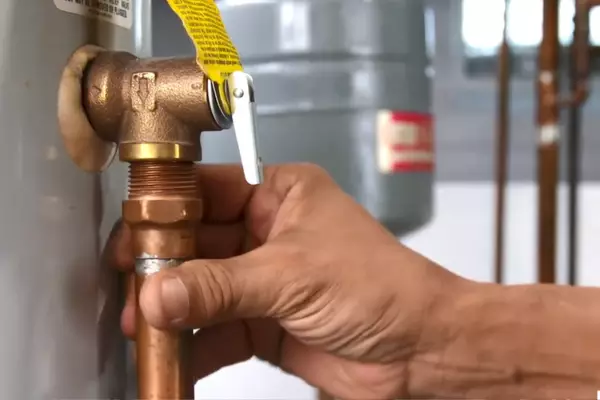The world of appliances is not as rigid as it appears. Sometimes, necessity or preference pushes us to make changes to our existing systems. One such change is the conversion of a natural gas water heater to propane. This modification may be due to various reasons such as cost, environmental impact, or even availability of fuel.
Converting a water heater is not an impossible task. In fact, with the right guidance and tools, you can safely and effectively convert your natural gas water heater to propane. This process mainly involves replacing specific parts and making certain adjustments to accommodate the new fuel.
The conversion process, although not overly complex, demands respect. Remember that you’re dealing with potentially hazardous fuels, and therefore, safety should never be compromised. And while it’s possible to DIY, it’s always wise to involve a professional if you feel uncertain.
Contents
The Distinctive Traits of Natural Gas and Propane
Before you start the conversion process, it is crucial to understand the distinct characteristics of both natural gas and propane. Knowing these characteristics will not only help you appreciate the conversion process better but also enable you to make an informed decision on whether the conversion is right for you.
Natural Gas: Pros and Cons
Natural gas is a fossil fuel that is often used in residential and commercial heating systems, including water heaters. Its key benefits include:
- Affordability: Natural gas is typically cheaper than propane, making it an economical choice for homeowners.
- Availability: In many urban areas, natural gas is readily available through a direct pipeline network, meaning you do not have to worry about running out of fuel.
- Eco-friendly: Compared to other fossil fuels, natural gas burns cleaner, producing fewer harmful emissions.
However, natural gas has its limitations:
- Infrastructure: Natural gas requires a well-established pipeline network, making it inaccessible in some rural or remote areas.
- Efficiency: Although it is cheaper, natural gas is less efficient compared to propane in terms of energy output.

Propane: Pros and Cons
Propane, also a fossil fuel, is a popular choice for various home and commercial appliances, including water heaters. It has its unique set of advantages:
- Energy-Dense: Propane has a higher energy content than natural gas. This means less propane is required to produce the same amount of heat.
- Portability: Propane can be stored in tanks, making it a versatile option for areas without a natural gas pipeline.
Nonetheless, propane comes with its own set of challenges:
- Price: Generally, propane is more expensive than natural gas. However, due to its high energy density, you may require less propane to achieve the same level of heating.
- Storage: Propane storage tanks need space and require proper safety measures.
Equipment Needed for Conversion
To convert your water heater from natural gas to propane, you will need certain tools and equipment.
Tools for Safe Conversion
The basic tools required for conversion typically include:
- Wrenches and Screwdrivers: These are necessary for disconnecting and reconnecting various parts of the water heater.
- Gloves and Safety Glasses: These are for personal protection, as you will be working with gas and mechanical parts.
- Soapy Water or Leak Detection Solution: These are used for detecting gas leaks during the testing phase.
Purchasing Conversion Kits
In addition to tools, you will need a conversion kit. This kit should include:
- Propane Burner Orifices: These are designed to control the flow of propane gas in the burner. The orifices for propane are different from those used for natural gas due to the differences in pressure and density between the two gases.
- Propane Regulator: This device regulates the gas pressure coming out of the propane tank.
Before purchasing a conversion kit, make sure it is compatible with your specific water heater model.
The Process of Conversion
Once you have gathered all the necessary tools and equipment, you can proceed with the conversion process.
Shutting Off Utilities
Before starting any work, it’s critical to ensure all utilities connected to the water heater are turned off. This includes:
- Gas Supply: Turn off the main gas supply to ensure no gas is flowing into the water heater during the conversion process.
- Water Supply: Shut off the water supply to prevent any water from entering the heater while you are working on it.
- Power: If your water heater has any electrical connections, be sure to disconnect it from the power source.

Removing Natural Gas Parts
After turning off the utilities, you need to remove the parts of the water heater that are specific to natural gas.
- Burner Orifices: You will need to remove the burner orifices designed for natural gas. They are usually located in the burner assembly.
- Gas Valve Regulator: This regulator is designed to manage natural gas pressure. Locate and carefully remove it as well.
Installing Propane Parts
Now that you’ve removed the natural gas-specific parts, it’s time to install the propane parts.
- Burner Orifices: Install the propane burner orifices in the burner assembly. Make sure to secure them properly.
- Gas Valve Regulator: Attach the new propane regulator. This will control the propane pressure.
Ensure to consult the conversion kit manual or the manufacturer’s guide for detailed instructions.
Adjusting the Burner Orifices
The burner orifices play a critical role in the efficiency and safety of your water heater, and it’s crucial to adjust them correctly.
Importance of Orifice Calibration
An incorrectly calibrated orifice can cause the propane to burn inefficiently, which can lead to increased fuel costs, decreased equipment life, and even potential safety hazards.
Steps to Adjust Burner Orifices
Most conversion kits come with specific instructions on how to adjust the orifices. Follow these instructions carefully. The typical process involves:
- Inspecting the Orifices: Make sure the orifices are clean and free of any debris.
- Adjusting the Orifices: Use the included tool or a wrench to adjust the orifices according to the provided guidelines.
Regulator Adjustments
Propane and natural gas require different pressure settings. Therefore, you will need to adjust your new regulator accordingly.
Role of Regulators
Regulators are designed to control the pressure of the gas flowing into your water heater. It ensures that the right amount of propane reaches the burner, allowing the heater to work efficiently and safely.
How to Adjust for Propane
Your conversion kit should include instructions for adjusting the regulator. Follow these instructions meticulously to ensure the pressure is set correctly for propane. Remember, too much pressure can cause the gas to burn too hot, while too little pressure may not provide enough heat.

Reconnecting and Testing the Water Heater
Now that you’ve made all the necessary changes and adjustments, it’s time to reconnect your water heater and test it.
Steps to Reconnect
Reconnect your water heater to the gas and water supply, following the manufacturer’s guide. Always turn on the propane slowly to avoid sudden pressure surges. Then, reconnect the water supply.
Safety Checks
Before lighting the water heater, check for gas leaks. This can be done by applying a leak detection solution or soapy water to the gas connections. If bubbles form, there is a leak that needs to be fixed before proceeding. Once everything checks out, you can light your water heater and check the flame. A steady blue flame indicates a successful conversion.
Post Conversion Considerations
After converting your water heater to propane, there are a few things you should keep in mind.
Fuel Efficiency After Conversion
Following the conversion, you may observe a change in the fuel efficiency of your water heater. Propane’s higher energy density should result in less fuel being used for the same amount of heating. Regular maintenance can help maintain this efficiency.
Maintenance of Propane Water Heater
Maintenance is essential for the longevity and efficiency of your water heater. Regular checks and timely cleaning can help prevent potential issues. Also, replace parts as recommended by the manufacturer.
Frequently Asked Questions
Can All Natural Gas Water Heaters Be Converted to Propane?
Not all models can be converted. It’s important to consult your manual or contact the manufacturer to confirm.
Is it Safe to Convert a Natural Gas Water Heater to Propane?
Yes, but safety precautions must be strictly followed. If unsure, seek professional help.
Will Converting to Propane Increase My Energy Bills?
Propane is more expensive per BTU, but it’s also more energy dense than natural gas. The impact on your bills depends on your usage.
Conclusion
The conversion of a natural gas water heater to propane can be a worthwhile pursuit for a variety of reasons. It’s a task that calls for an understanding of both fuels, and their pros and cons.
The process itself involves a systematic replacement of key components, as well as adjustments to accommodate the new fuel. It’s a delicate operation, dealing with fuels and appliance parts, but not impossible with the right guidance.
Always remember that safety is paramount in these tasks. The risks associated with fuels and appliances are real and should not be underestimated. The entire process is a balance of practicality and caution, and when done correctly, the conversion will serve you well.
